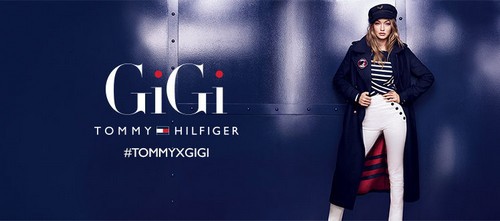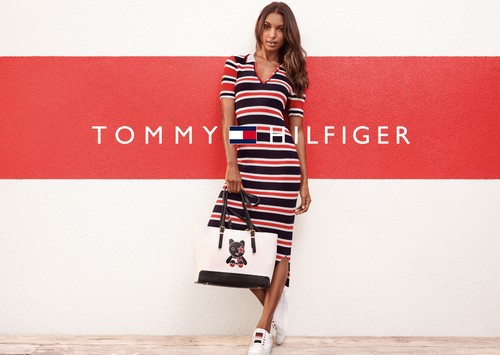The Marketing mix of Tommy Hilfiger analyses the 4Ps of Tommy Hilfiger, including the Product, Price, Place, and Promotions. Tommy Hilfiger is a subsidiary of its parent company, Philip Van Heusen Corporation, or PVC. It is associated with the lifestyle and retail industry as it deals in apparel and footwear. This multinational corporation of American origin was founded in 1985 by ace fashion designer Tommy Hilfiger. It is a public company that offers peppy, hip-hop, and trendy outfits. Brand faces rivalry from the following.
- Nike
- Gas
- Adidas
- Levi’s
- Lee
- Wrangler
- Ralph Lauren
- Lacoste
About Tommy Hilfiger
- Type: Fashion brand
- Industry: Apparel and accessories
- Founded: 1985
- Founder: Tommy Hilfiger
- Headquarters: Amsterdam, Netherlands
- Area served: Worldwide
- Key people: Thomas Jacob Hilfiger (Founder) and Martijn Hagman (CEO)
- Number of employees: 16,000+ Worldwide
Table of Contents
Tommy Hilfiger Product Strategy
Tommy Hilfiger is a high-quality brand that designs, sells, and manufactures apparel and related products. It has a vast range of products to suit the needs and tastes of men, children, and women.
Tommy Hilfiger offers a diverse range of products and services.
The new Product Mix of Tommy Hilfiger in 2023 is as follows (Source).
- Apparel: This is a significant category for Tommy Hilfiger, encompassing a variety of clothing items for men, women, and children. It includes Casual wear like T-shirts, polos, and jeans; Formal wear such as suits, dress shirts, and trousers; Outerwear, including jackets, coats, and sweaters; and Sportswear, designed for comfort and style.
- Accessories: Tommy Hilfiger also offers a wide range of accessories, which include Watches and jewelry; Belts, wallets, and bags; Hats, scarves, and gloves; and Eyewear, including sunglasses and prescription glasses.
- Footwear: The brand offers various types of footwear for different occasions and seasons, such as: Casual shoes like sneakers and loafers; Formal shoes, including dress shoes and boots; Sandals and flip-flops for summer.
- Fragrances: Tommy Hilfiger has a line of fragrances for both men and women.
- Home Furnishings: They also offer a range of home products, including Bedding and bath products, Tableware, and decorative accessories.
- Undergarments and Swimwear: This includes a variety of undergarments for men and women, as well as swimwear.
Tommy Hilfiger is known for its classic American style with a preppy twist; these products often reflect this aesthetic. They continue to innovate and expand their product range, keeping up with current fashion trends while staying true to their brand identity.
Tommy Hilfiger Place Strategy
Tommy Hilfiger is a global brand headquartered in New York City in the United States. The company has spread its product presence to more than ninety countries worldwide. It has flagship stores in New York, London, Paris, Tokyo, Los Angeles and Dusseldorf. Its anchor stores are in Zurich, Vienna, Sydney, Singapore, Shanghai, Seoul, Sao Paulo, Santiago, Panama City, Osaka, New York City, Mumbai, Moscow, Milan, Prague, Cannes, and Beijing. The company launched its first outlet store in Thailand in 2015. In 2015, a digital sales-in showroom was opened in New York City, with plans to open more later.
Tommy Hilfiger has a widespread distribution channel includes services via one thousand four hundred free-standing retail outlets and several departmental stores. All its outlets are tastefully decorated, reflecting the brand’s style and persona. It has more than fifteen thousand associates to handle its work efficiently. Tommy Hilfiger’s shopping website caters to its customers via online sales. The official website is available in Turkish, Dutch, Japanese, Italian, French, German, Portuguese, Spanish, and most common English, so it can easily cater to people from different places. It also has tie-ups with other shopping portals for marketing strategy selling its products.
Here’s the place strategy of Tommy Hilfiger
- Global Retail Stores: Tommy Hilfiger employs a widespread retail strategy, operating numerous branded stores in key cities worldwide. These stores are often located in high-end shopping districts and malls, making the brand accessible to many consumers.
- Online Presence: The brand has a solid online presence, with an e-commerce platform that allows customers to purchase products from anywhere in the world. This online strategy caters to the growing trend of digital shopping and reaches a broader, tech-savvy audience.
- Multi-Channel Distribution: Tommy Hilfiger products are available through multiple channels, including department stores, specialty stores, and third-party retailers. This multi-channel approach ensures the brand is accessible to various market segments and consumer preferences.
- Selective Placement in Luxury Outlets: The brand strategically places its products in high-end luxury outlets, aligning with other premium brands. This placement enhances the brand’s image and appeals to consumers looking for luxury and quality.
- Geographic Expansion: Tommy Hilfiger continuously explores new markets, especially in emerging economies. Expanding geographically, the brand taps into new customer bases, increasing its global reach and market share.
Tommy Hilfiger Pricing Strategy
Tommy Hilfiger is the pioneer of classic relaxed style and has targeted upper-class sections of society from urban cities and youngsters seeking cool American trends as its target customers. The brand caters to customers from the higher section of society for whom money does not matter much. Hence, it has adopted a premium pricing and marketing strategy for its premium products. Its products are a mixture of the best quality with the latest design and classic style, making it a hit amongst its patrons.
Tommy Hilfiger has also levied a value-based pricing policy for its customized goods business. These are made-to-order products and are charged at a higher rate. To increase its sales figures, the brand has adopted a discount-based pricing system on a few of its products. These are especially offered during the off-season so that sales do not drop. Moreover, during these times, consumers who naturally could not afford such high-priced items make special purchases and thus increase the brand’s product sales.
Tommy Hilfiger employs a multifaceted pricing and marketing strategy that is both competitive and brand-enhancing, reflecting its established status as a premium lifestyle brand. Here’s an overview:
- Premium Pricing: At its core, Tommy Hilfiger adopts a premium pricing strategy. This approach aligns with its brand image of offering high-quality, fashionable products. By setting higher prices than some competitors, the brand reinforces its perception as a luxury and high-end label, targeting consumers willing to pay more for perceived value and brand prestige.
- Market-Competitive Pricing: While maintaining a premium edge, Tommy Hilfiger also ensures its prices are competitive within the high-end fashion market. This balance helps the brand to remain attractive and accessible to a broad consumer base, including aspirational customers who seek luxury at a relatively attainable price point.
- Dynamic Pricing Strategy: Utilizing a dynamic pricing approach, Tommy Hilfiger adjusts prices based on market demand, competition, and seasonality. This flexibility allows the brand to maximize profits during peak seasons and clear out inventory through strategic markdowns during off-peak times, such as end-of-season sales.
- Psychological Pricing: The brand often employs psychological pricing tactics, such as pricing products just below a round number (e.g., $99.99 instead of $100). This strategy is common in retail and makes prices appear lower than they are, thus appealing to value-conscious consumers.
- Segmented Pricing: Tommy Hilfiger uses segmented pricing to cater to different consumer segments. For instance, it offers a range of products, from more affordable lines to exclusive, high-end collections. This approach allows the brand to appeal to budget-conscious consumers and those seeking luxury goods, broadening its market reach.
In summary, Tommy Hilfiger’s pricing strategy is a sophisticated blend of premium positioning and market competitiveness underpinned by a keen understanding of consumer psychology, customer demographics, and market dynamics. This approach supports the brand’s upscale image and ensures adaptability and appeal across diverse consumer segments.
Tommy Hilfiger Promotion Strategy
Tommy Hilfiger has adopted an aggressive marketing policy to create a vast brand visibility and success in the market. In 1985, graphic designer and advertiser George Lois was hired to create a billboard to be showcased at the Times Square Centre. The brand has taken help from every marketing and advertising tool and advertised via television, fashion magazines, and billboards. It realizes the positive impact of social media and has maintained a direct connection with its consumers via its official website, Facebook page, Twitter account, and YouTube.
Tommy Hilfiger is a highly creative designer and realized early on the advantages of celebrity endorsements in advertising. He had rappers Coolio and Puffy walking for his brand during runways shows. The brand has showcased its collections at essential and music industry events to generate maximum product coverage. In 2011, Prep World’s publicity tour generated massive interest among the masses. It featured pop-up shops in London, New York, Paris, Milan, Madrid, Los Angeles and Belgian. Tommy Hilfiger and author Lisa Birnbach made personal and special appearances. The company’s 30th anniversary was celebrated with a fashion tour. Rafael Nadal was roped in as its brand ambassador for Tommy Hilfiger Tailored Collection and Tommy Hilfiger underwear in 2015 for the Fall Collection.
Tommy Hilfiger officially sponsored the Psychoderelict tour by Pete Townshend in 1993. It also entered several sponsorship deals with celebrities like Britney Spears for her 1999 Baby One More Time tour, Sheryl Crow for If It Makes You Happy in 1997, and Lenny Kravitz for Freedom Tour in 1999. The clothing company has been a recipient of several awards and recognition. True Star, a fragrance with Beyonce Knowles endorsed as its poster girl, won the FiFi Award in the Best New Commercial Fragrance category. The current celebrity associated with the Hilfiger collection and the brand ambassador with Tommy Hilfiger is Gigi Hadid.
Some Recent Video ads and Print ads for Tommy Hilfiger are:
Liked this post? Check out the complete series on Marketing Mix

